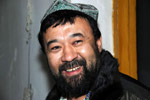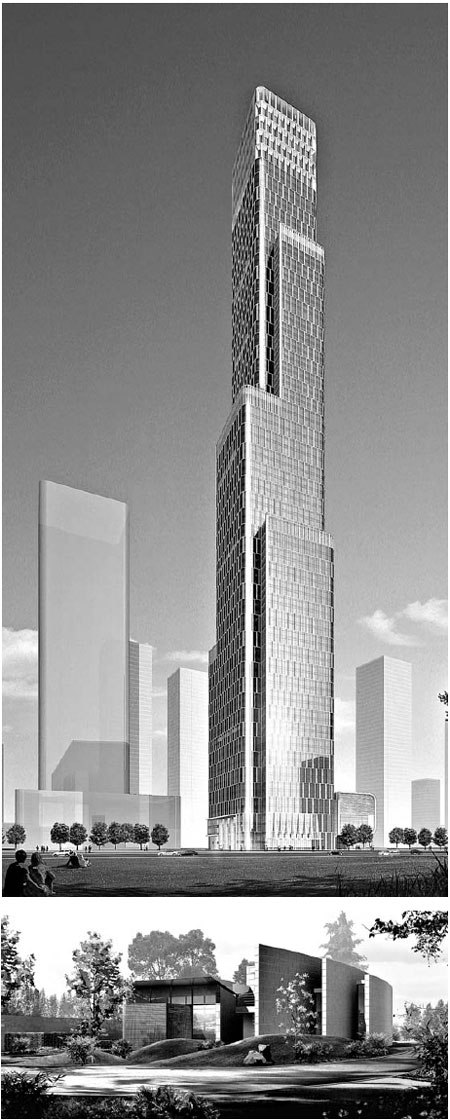China-US
From China's wealth, designs to dream about
Updated: 2011-01-30 08:38
By Lawrence W. Cheek (New York Times)
|
|
Scores of architectural firms across America are enjoying a startling boom - in China.
The Chinese work has helped fill the void left by a listless American economy. But more intriguing, the architects say, is that Chinese developers and even government agencies are proving to be better clients than their American counterparts. They say the Chinese are more ambitious, more adventurous and even more willing to spend the money necessary to realize the designs.
The Zhongkai Sheshan Villa project, in a Shanghai suburb, provides a window onto the workings of some architectural commissions in China.
Wang Qian, a consultant for the developer, the ZK Real Estate Development Company of Shanghai, toured luxury communities in Palm Springs, California; Los Angeles; and Toronto in 2003 and chose North American architects to design the homes.
"I have no idea whether Chinese architects can do this," said Mr. Wang. "Maybe they can - but I didn't want to take that risk."
Stuart Silk, an architect in Seattle with a 17-person firm, received a commission for nine of the villas, which bear stratospheric prices - $7.5 million to $15 million. His designs were required to be distinct, but no stylistic guidelines materialized; nor was there a budget. For the first time in his career, he was an artist facing a blank canvas. "It opened up a part of my brain that hadn't been exercised in a while," he says.
As the design progressed, however, requirements popped up. Mr. Silk was surprised to learn, for example, that traditional Chinese feng shui principles meant that a front door couldn't be positioned at the foot of a stairway, lest good fortune tumble down the stairs and roll out the door.
Still, he said, his work in China "turned out to be a real win."
Chris McVoy, senior partner at Steven Holl Architects in New York, says a Chinese developer gave the firm three months to develop a concept for a high-rise housing project in Beijing. The firm injected into the project Mr. Holl's ideas about urbanism, utilizing geothermal energy, and fixing everything the firm saw wrong with China's dreary Soviet-inspired high-rises.
"We thought they'd say, ‘You're crazy, forget it,'�? Mr. McVoy says. "We presented to about 20 people, and when we were finished, of course they all looked to their president to respond first. He said: ‘Anybody can build buildings. Few can build poetry.'�?
The project was built, and led to the even more radical headquarters for China Vanke, a big developer based in Shenzhen in southern China. The structure is the size of the Empire State Building laid out horizontally and raised five stories off the ground to provide a public park below.
The firm also designed what it calls the Sliced Porosity Block in central China; jagged gorges are scooped out of the buildings to carve paths for sunlight.
"There's no way a U.S. developer would let us do these," Mr. McVoy says, adding that the American mentality is, "If it hasn't been done before, then you shouldn't do it. It's all about risk, risk, risk. The Chinese have a kind of fearlessness."
And, he says, "There's an appreciation of nonmaterialist ideas, a connection to history and culture and especially, meaning."
The architects appreciate such clients. Heller Manus Architects, a 25-employee firm in San Francisco, is now doing two-thirds of its work in China. Clark Manus, a partner and the president of the American Institute of Architects, has a theory. "The U.S. political establishment is mostly attorneys," he says. "In China, the highest-ranking officials tend to be engineers. They see a problem, they allocate money and effort toward a solution."
Of course, a decisive, top-down system means that projects are built whether or not people want them. Development has already erased much of China's historic architectural fabric. Mr. McVoy says his firm would have "serious misgivings" about accepting a commission that would destroy something of historical value.
Goettsch Partners in Chicago has established a permanent office in China, and a young Shanghai-born partner, James Zheng, is working as Goettsch's director of Asian operations. He says he spends 60 percent of his time in China. As Jeffrey Heller of Heller Manus observed, "It's such a relationship-driven world."
Mr. Zheng says that there is a shortage of Chinese architects with the qualifications to execute large-scale commercial projects. Nor, he said, do all developers have adequate expertise for big projects. "You want to avoid clients who don't know anything about building," he says. "They won't respect you; they'll try to change things along the way."
Which sounds a lot like architects' complaints about American clients.
The New York Times
Specials

Spring Festival
The Spring Festival is the most important traditional festival for family reunions.

Top 10
A summary of the major events both inside and outside China.

A role model
Alimjan Halik had been selected as the "Cyberspace Personality Who Moved the Hearts of the Chinese in 2010".
